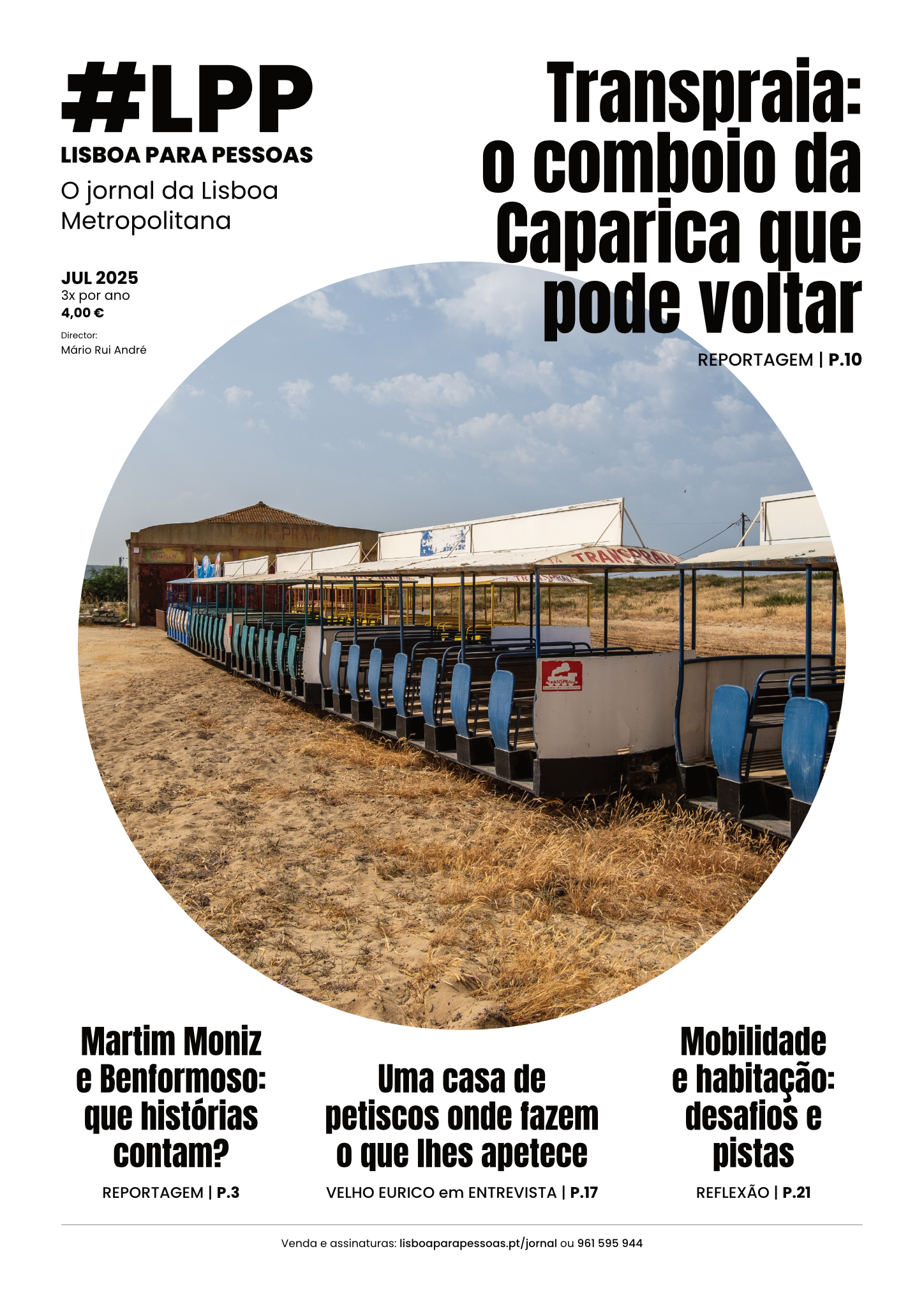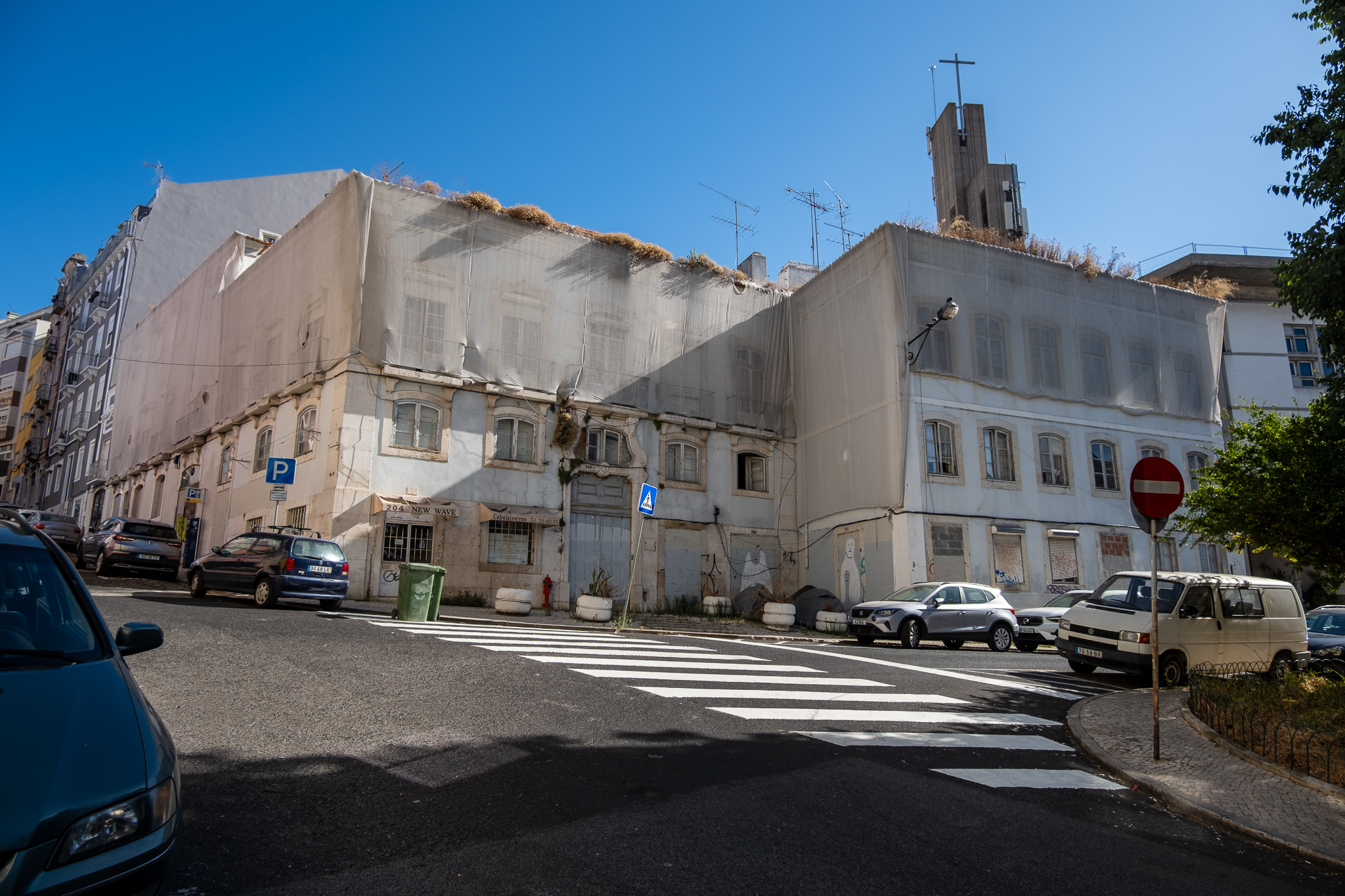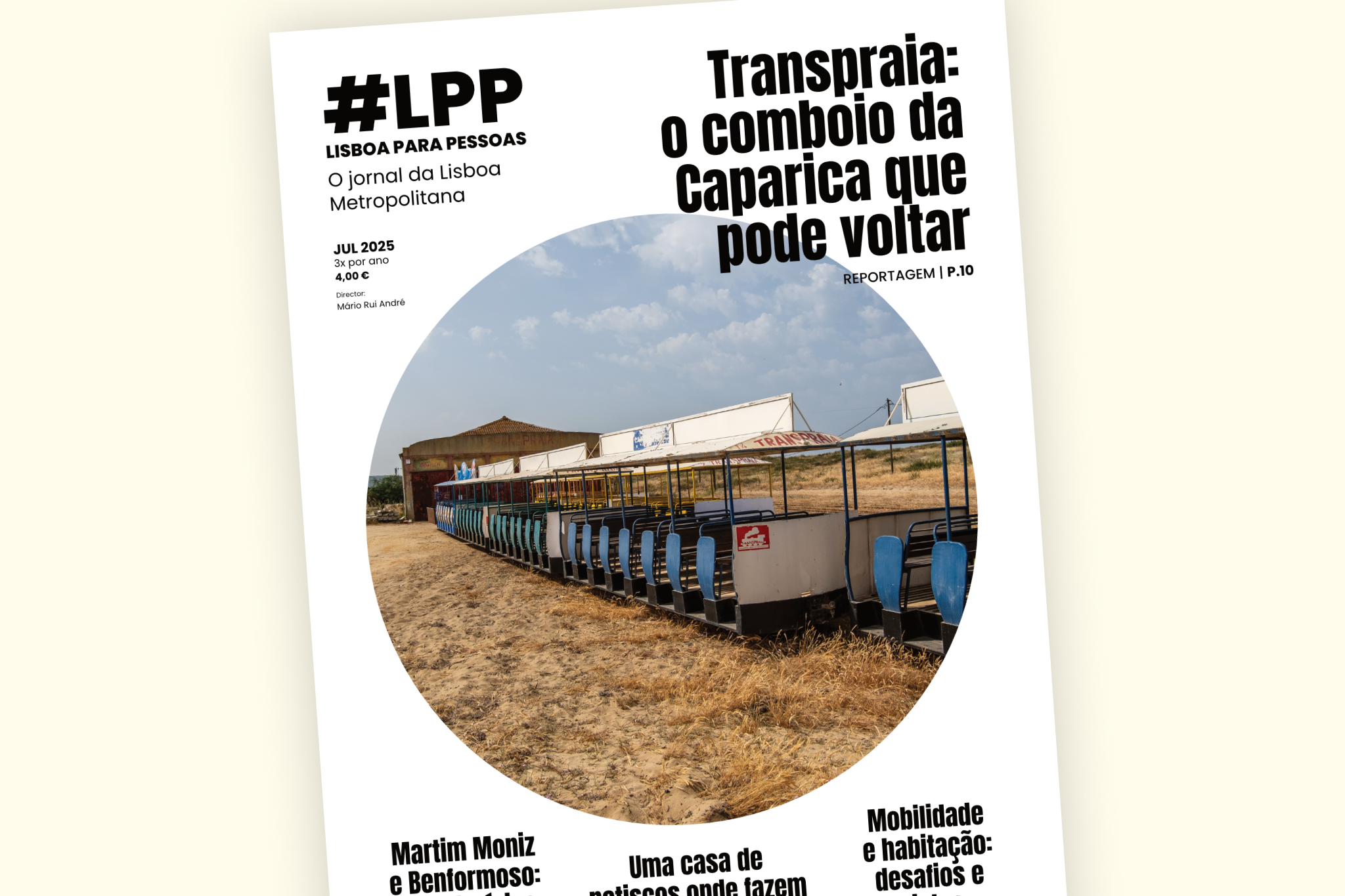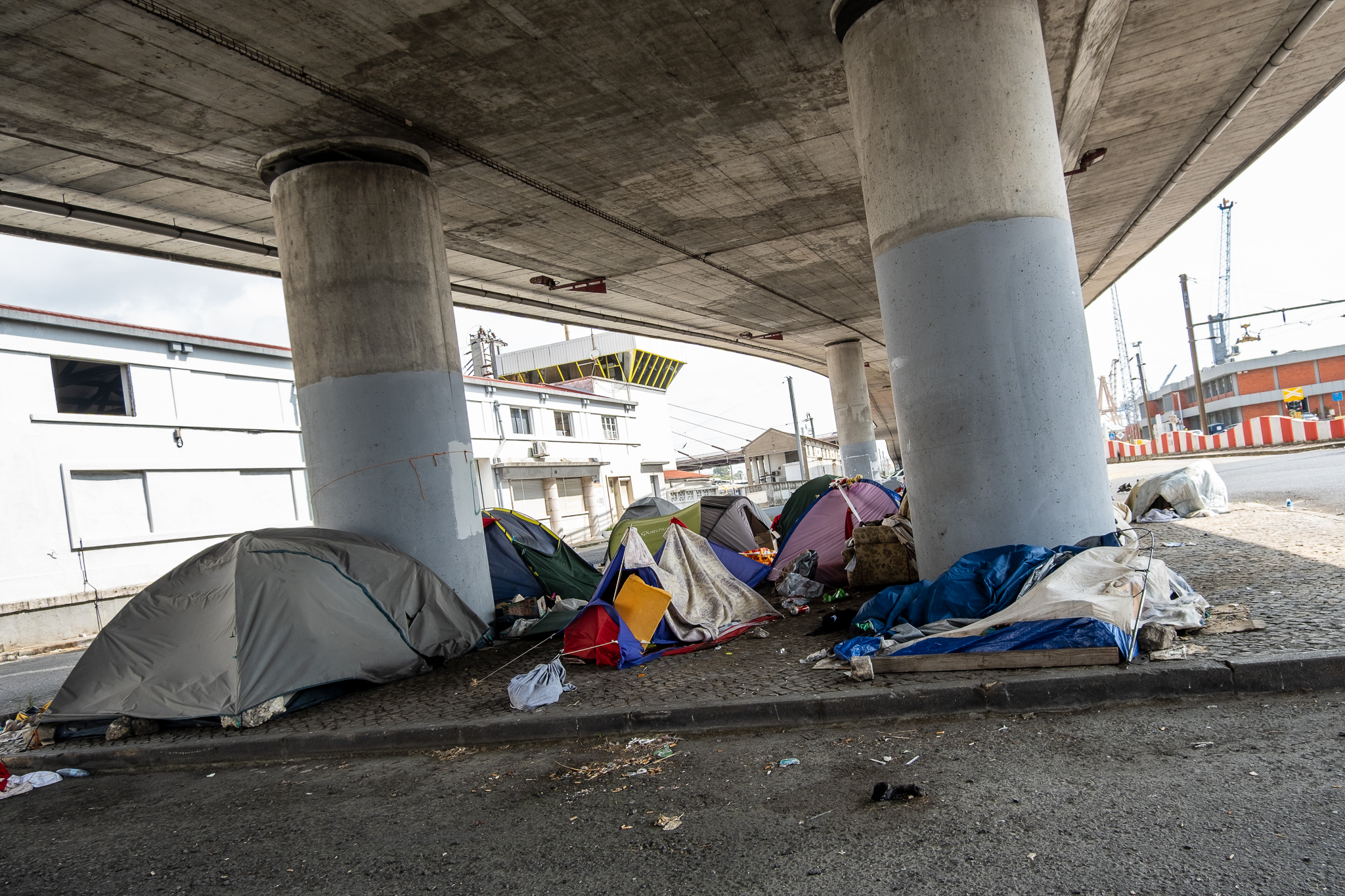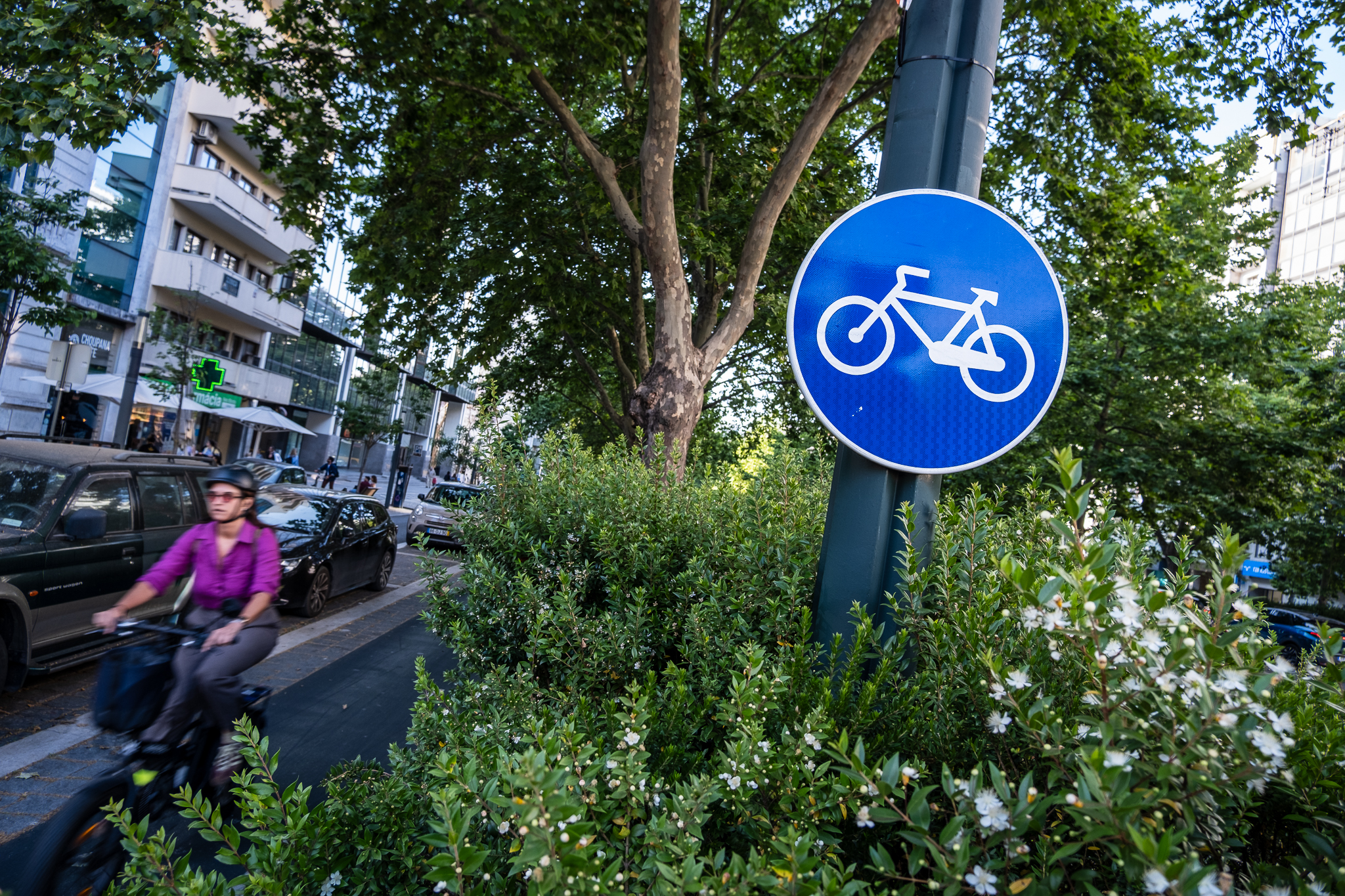Everything you need to know about mobility restrictions in the first week of August during World Youth Day (WYD).

In Lisbon, in the first week of August, there will be restricted areas for road traffic, with exceptions for residents and workersregardless of whether they travel by car or bicycle. There will also be various changes to public transport in the capital and metropolitan areawith Metro and train stations closed, the Marquês de Pombal bus terminal relocated and changes to the usual Carris routes.
If you're not on vacation, teleworking or taking advantage of the government's point tolerance for its employees working in Lisbon, this article has everything you need to know for the week of World Youth Day (WYD), between August 1 and 6.
What changes in public transport?
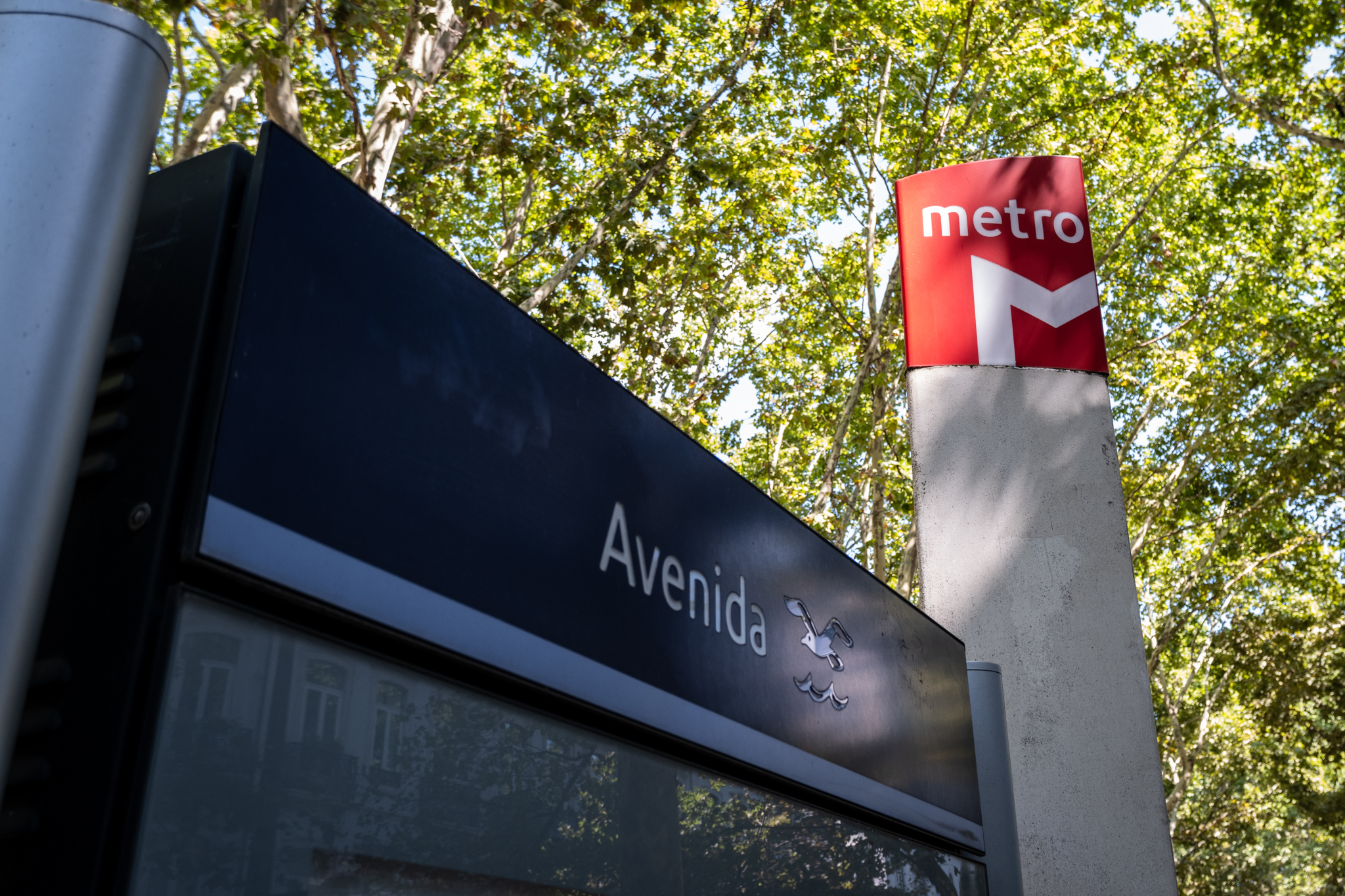
During World Youth Day, there will be several changes in the operation of public transport between August 1 and 6. These include:
- on days August 1st, 3rd and 4th, will be the following Lisbon Metro stations closed: Marquês de Pombal, Avenida, Parque and Restauradores. Trains on the Yellow and Blue lines will pass through these stations without stopping;
- on days August 5th and 6th, will be the following train stations are closed: Moscavide, Sacavém, Bobadela and Santa Iria. CP suburban trains will pass through these stations without stopping there;
- from 1 to 6 August, o Carris Metropolitana bus terminal will be relocated to Rua Marquês Sá da Bandeiranext to Gulbenkian. This means that all Carris Metropolitana lines that usually stop at Marquês de Pombal will now do so at this location: 1704, 1716, 1723, 1724, 1725, 1726, 1728, 1730, 1729, 1733, 3704 3709 e 3715;

- between July 31 and August 6, a street that gives access to the Belém train station stop may have its access conditioned. Whenever this situation occurs, the lines serving this stop will end their route at the Mosteiro dos Jerónimos stop. These are the lines: 1714, 1715 e 1718;
- from 1 to 6 August, will be Carris routes that are suppressed or have a change of route "serve the areas delimited by the security perimeters of the event and those circulating in areas of very narrow streets"."This is a high security risk due to the increased flow of people in the city streets". To wit:
- From August 29 to 6: All Neighborhood Buses are suspended except for routes 26B (Parque das Nações), 29B (Olivais), 40B (Santa Clara) and 41B (Santa Clara);
- August 1, 3, 4, 5 and 6: routes 737, 770 and 771, and streetcars 12E and 24E are suspended;
- August 1, 3 and 4: altered routes 702, 706, 709, 711, 712, 713, 716, 720, 723, 726, 727, 728, 732, 735, 736, 738, 742, 744, 746, 748, 753, 759, 760, 774, 781, 782, 783, 794, 15E, 28E, 207 and 208;
- Days 05 and 06 of August: altered routes 705, 708, 711, 725, 728, 732, 735, 736, 744, 759, 760, 781, 782, 794, 15E, 208 and 210;
- On August 1, 3, 4, 5 and 6the Bica, Glória and Lavra elevators (in charge of Carris) will not be operating "for reasons of road safety". The Santa Justa elevator will remain in operation throughout the duration of the event.
You can find out more about Carris's constraints in more detail here here.

What reinforcements will there be?
The World Youth Day will require reinforcements in the offer that would be usual in the first week of August, which, being a summer period, outside the school year, would have fewer circulations. Reinforcements are planned for Carris and Carris Metropolitana buses, CP and Fertagus trains, TTSL boats and Metro de Lisboa and MTS services. In total of the various modes, 1623 more circulations are being prepared on weekdays (+5%) and 5260 more circulations on the weekend of August 5 and 6 (+29%), corresponding to 354 more seats on weekdays (+7%) and 780 more on that weekend (+26%).

According to the Government, the planned deletions at Carris due to security perimeters, "They will free up resources that will be much needed to reinforce other services that are more in demand, which will be carried out with reinforcements of supply, with an increase in the number of circulations.". Road shuttles will also be operated with "dozens of buses" of Carris and Carris Metropolitana for the transportation of the event volunteers.
The Metropolitan Carris lines that will be reinforced are detailed below. here - in essence, they will operate in school term time. They are as follows: 1501, 1704, 1707, 1709, 1715, 1716, 1718, 1721, 1722, 1723, 1724, 1729, 1733, 2023, 2029, 2034, 2201, 2202, 2203, 2205, 2206, 2207, 2209, 2215, 2217, 2218, 2219, 2220, 2223, 2225, 2512, 2515, 2521, 2610, 2632, 2706, 2708, 2713, 2714, 2715, 2717, 2724, 2725, 2726, 2736, 2740, 2752, 2754, 2756, 2765, 2776, 2785, 3703, 3704, 3709, 3715, 3721, 4701, 4702, 4703, 4704, 4705, 4707, 4720.
You can find out more in this Government document:
Restricted areas
The Lisbon City Council has established, together with the police authorities, road traffic restriction zones in three parts of the cityin the central core, between Parque Eduardo VII and Baixa (in force on August 1, 3 and 4); in Parque das Nações (in force on August 5 and 6); and the riverside area of Algés (in force on August 6).
Everything you need to know about these areas:
- the Red Zones will be "absolute restriction" to road traffic, with, of course, the entry and exit of residents within this perimeter being guaranteed. In Yellow ZonesOn the other hand, there will be fewer restrictions but some restrictions, and vehicles bound for that area will not be allowed to circulate. In Green Areas free movement will be possible, but, "for reasons of congestion and more intense pedestrian traffic, at certain times of the day, there may be occasional cuts";
- there will be no physical blockades, with restrictions being coordinated on the ground by police authorities. The Lisbon City Council tells LPP that this plan is dynamic and could be adjusted on the ground, case by case, if necessary, with that assessment also falling to the authorities;
- in the Yellow Zones, residents and workers with a declaration from their employer are guaranteed movement.This means that all vehicles are allowed to circulate, regardless of their vehicle (so bicycles and scooters will be allowed to circulate). The circulation of loading and unloading vehicles is also guaranteed (from midnight to 7 am, in general), to people with permits in public parking lots, to cabs and TVDEs, to public transport (Carris and Carris Metropolitana) and to tourist vehicles. tuk-tuks;
- a pedestrian mobility is guaranteed throughout the city, without restrictions.
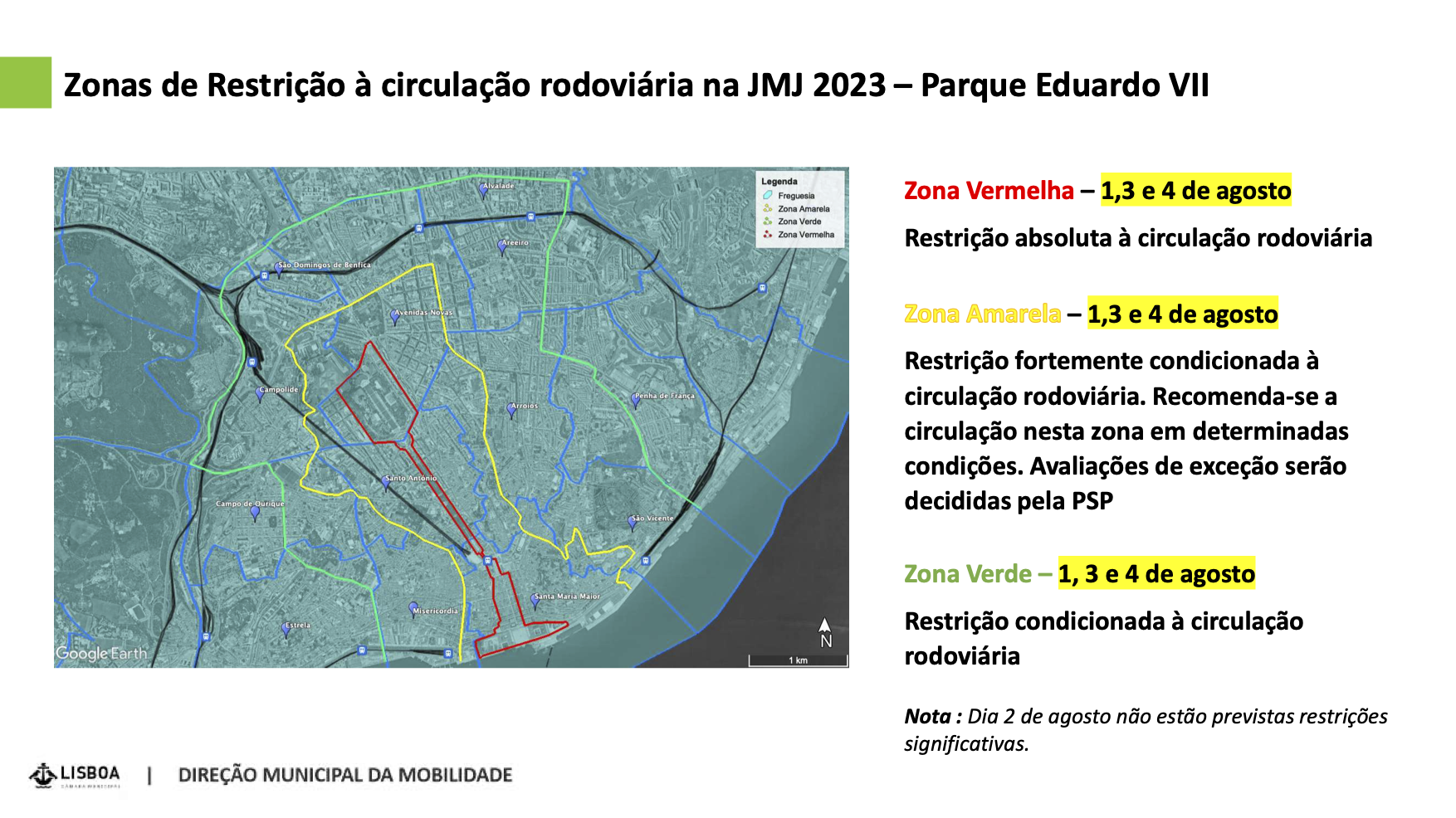

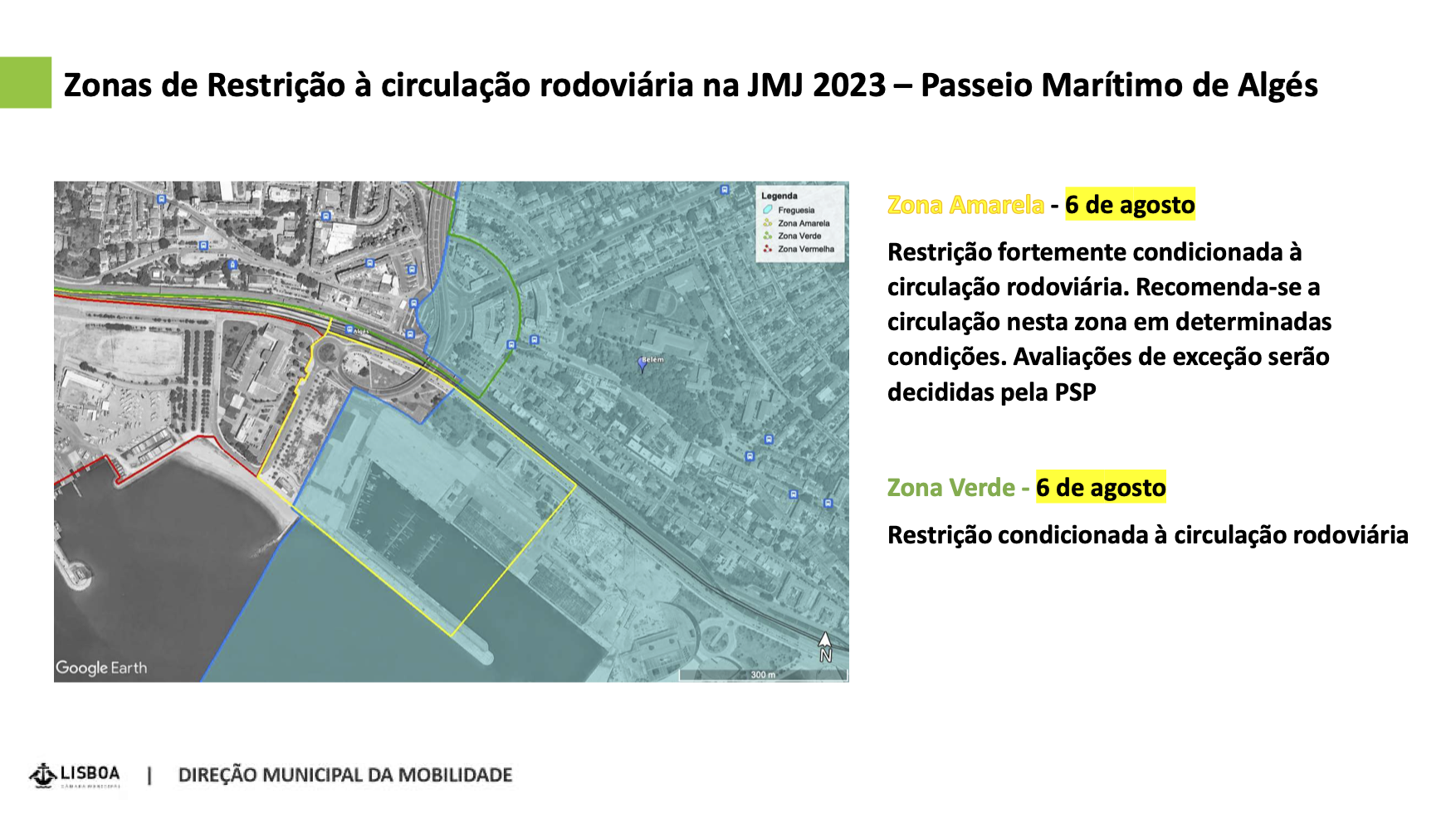
The biggest restrictions will happen on the axis between Marquês de Pombal and Baixa on August 1, 3 and 4 (Tuesday, Thursday and Friday), with no restrictions expected on August 2 (Wednesday). In Parque das Nações and Algés the perimeters only apply at the weekend. Therefore, it is important to look at this axis in a little more detail.
- a Red Zone is defined around Parque Eduardo VII by Rua Castilho, Rua Joaquim António de Aguiar, Rua Marquês da Fronteira, Avenida António Augusto de Aguiar and Avenida Fontes Pereira de Melo; involves the inner traffic circle of Marquês de Pombal (not the outer traffic circle) and the central roads of Avenida da Liberdade (not the side roads), Restauradores and Rossio, the Pombaline fabric of Baixa (between Rua da Prata and Rua Nova do Almada) and extends to the river, covering Ribeira das Naus, Campo das Cebolas and Praça do Comércio, not reaching Cais do Sodré;
- a Yellow Zone already includes the waterfront between Cais do Sodré and Santa Apolónia, and also Príncipe Real and Largo do Rato, a wider area around Parque Eduardo VII (on the Campolide side, the perimeter goes up to Rua de Campolide, Avenida Calouste Gulbenkian and Praça de Espanha; on the Avenidas Novas side, it goes to Avenida de Berna and Avenida da República; on the Arroios side, it extends to Estefânia), and also the entire area of Martim Moniz, Mouraria and Largo da Graça up to Santa Apolónia.
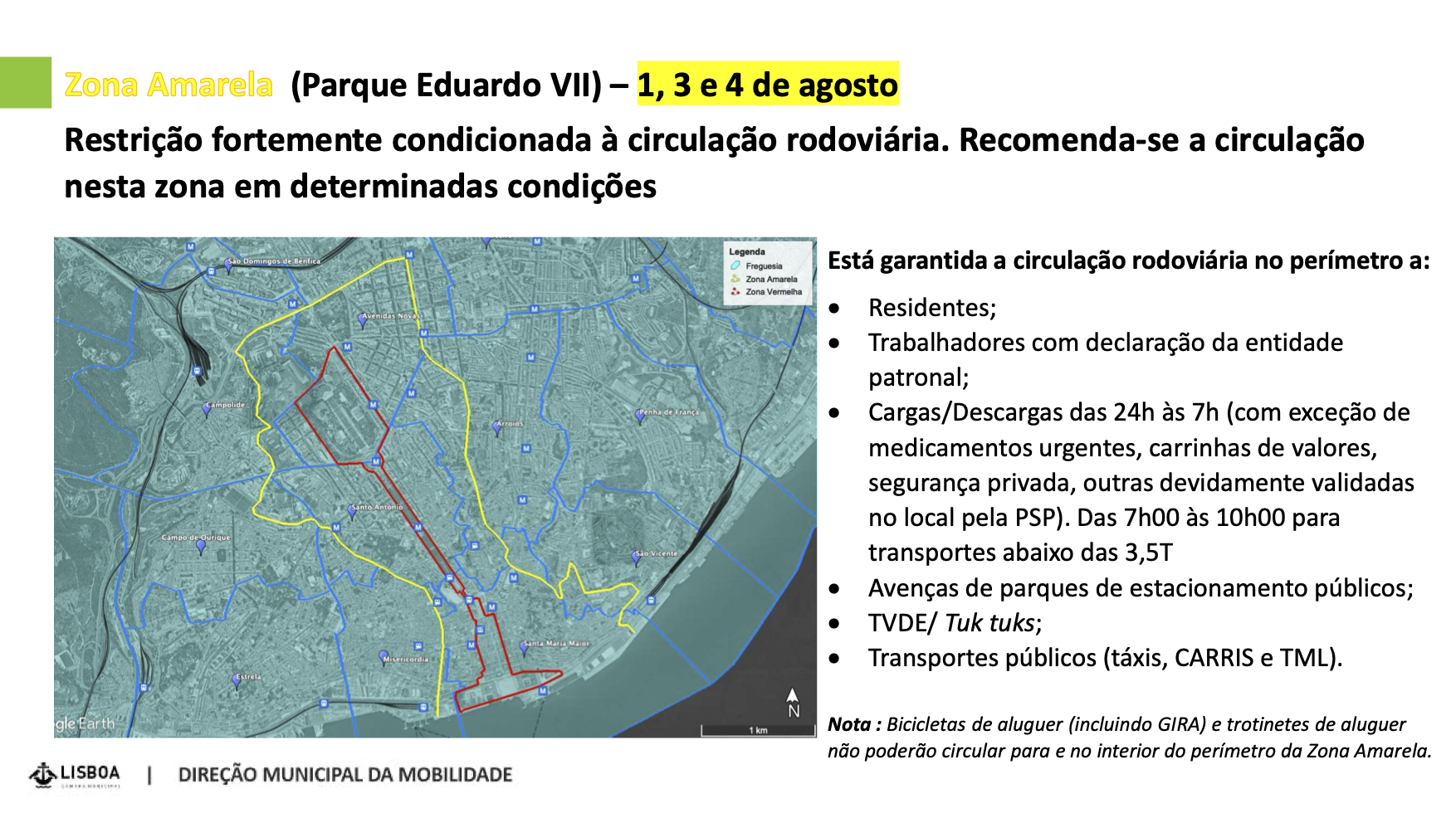
All information on these restrictions can be found in detail on the website. on this page on the Lisbon Chamber website, or in the following document:
The municipalities of Loures and Cascais also presented mobility plans, which you can consult in detail here below:
What about bicycles?

Lisbon City Council prepares to condition the public bike-sharing service, GIRA, during the week of World Youth Day, between August 1 and 6.. Thus, the various GIRA stations that are within the Red and Yellow Zones should be deactivated while these perimeters were active. There will also be no bicycles and scooters of private operators in the restricted territory.
However, these restrictions do not apply to bicycles and scooters owned by persons living, working or using the city of Lisbon, as a source from the municipality clarified to LPP. Residents and workers will be able to cycle in Yellow Zones, just as they can do so by car or motorcycle. However, the Chamber's plan is dynamic and the police authorities may, on the ground, place temporary restrictions in case, for example, there are large crowds of people on foot.
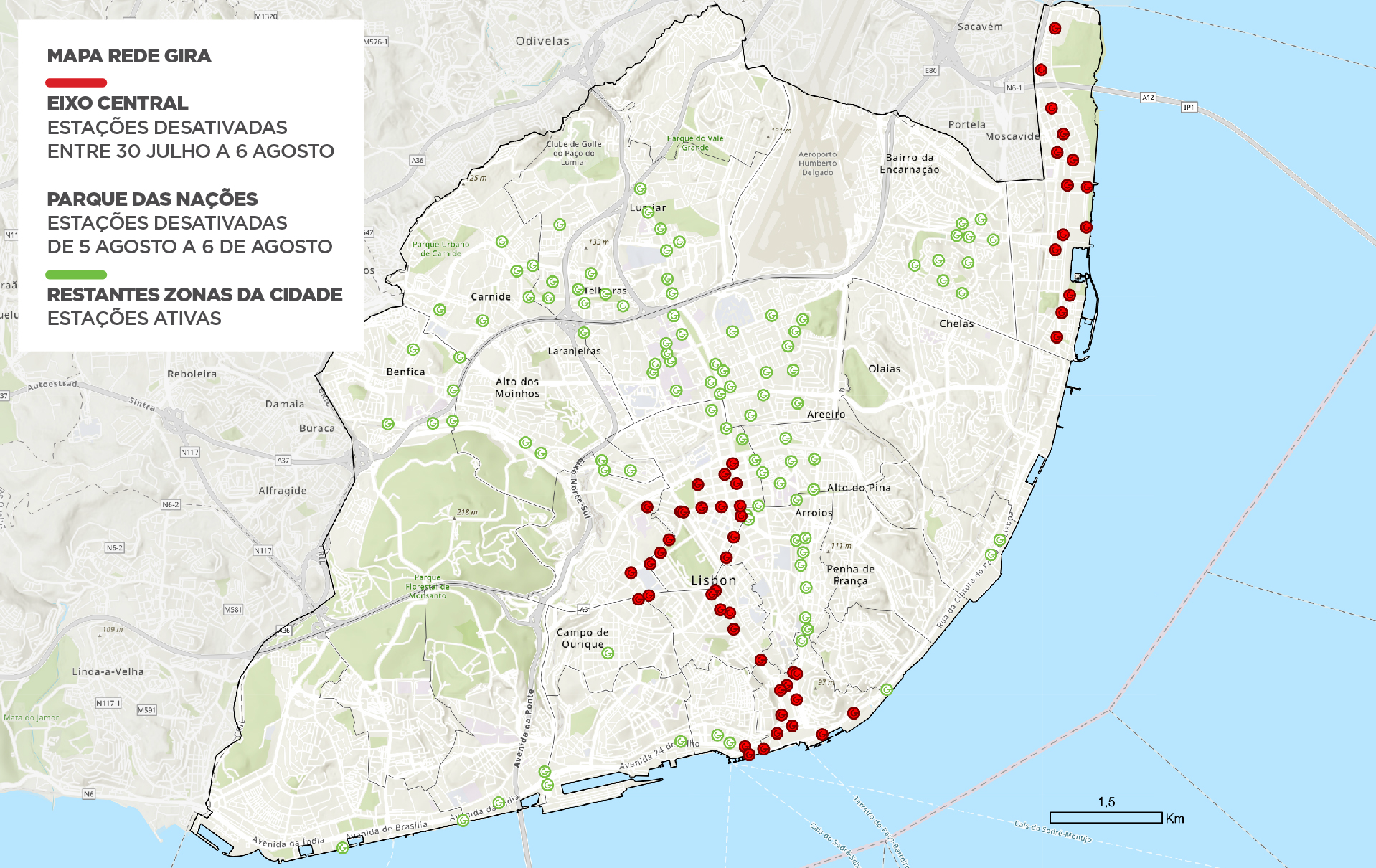
According to EMEL, "The GIRA service will be conditioned during the WYD period in the red and yellow zones, namely with the deactivation of GIRA stations and inhibition of bicycle circulation. In the Central Axis in the area between Saldanha and Terreiro do Paço this conditioning occurs between July 30 and August 6. In Parque das Nações between August 3 and 6. The sale of Annual, Monthly and Daily passes will be suspended between July 30 and August 6. GIRA will resume unrestricted operation from August 7". More information can be found at here.
The issue of bicycles was foreseen in the municipality's plan, but it has passed by the plan organized by the Government, which is silent on a form of travel that has been growing in the city of Lisbon. In fact, at the presentation event of this plan, which took place this Friday, a journalist from Público questioned Government officials about the impact on cycling mobility, describing a surprised silence with his question:
Asked by Público about the possibility of using bicycles and scooters in the area with mobility restrictions - a question that has raised doubts since the mobility plan designed by the Lisbon City Council was made known this week - Sá Fernandes paused, looked at Isabel Pimenta and Paulo Vizeu Pinheiro, but it was Magina da Silva, national director of the PSP, who stood up to answer. "In the yellow zone, with traffic restrictions, only residents and workers can circulate, and for that they will have to have a safe conduct". Vizeu Pinheiro also stressed that "it is a matter of security", recalling that it is impossible to have so many people riding scooters and bicycles in the same place. "They are very fast, they can have a disruptive effect," he said.
- Samuel German, in Público newspaper
Paulo Vizeu Pinheiro, Secretary General of the Internal Security System, considered that the bicycles and scooters "they are very fast, they can have a disruptive effect" and that it is therefore impossible to have so many people riding scooters and bicycles in the same place. On the same day as these statements by Vizeu Pinheiro, it was learned that Portugal is the country in Western Europe with the most pedestrian deaths per million inhabitants due to car accidents. In the last five years, around 25,000 pedestrians have been hit by cars in Portugal; the vast majority have suffered minor injuries, but 527 have died, which means that, on average, every three days there is a pedestrian fatality, according to data from the National Road Safety Authority (ANSR). requested by Expresso newspaper.
Where can I find more information?
Updated at 10:00 on 24/07/2023: added information on changed/suspended routes of Carris and Carris Metropolitana.
Updated at 15:20 on 27/07/2023: added more information about Carris and GIRA, as well as other municipalities in amL.
